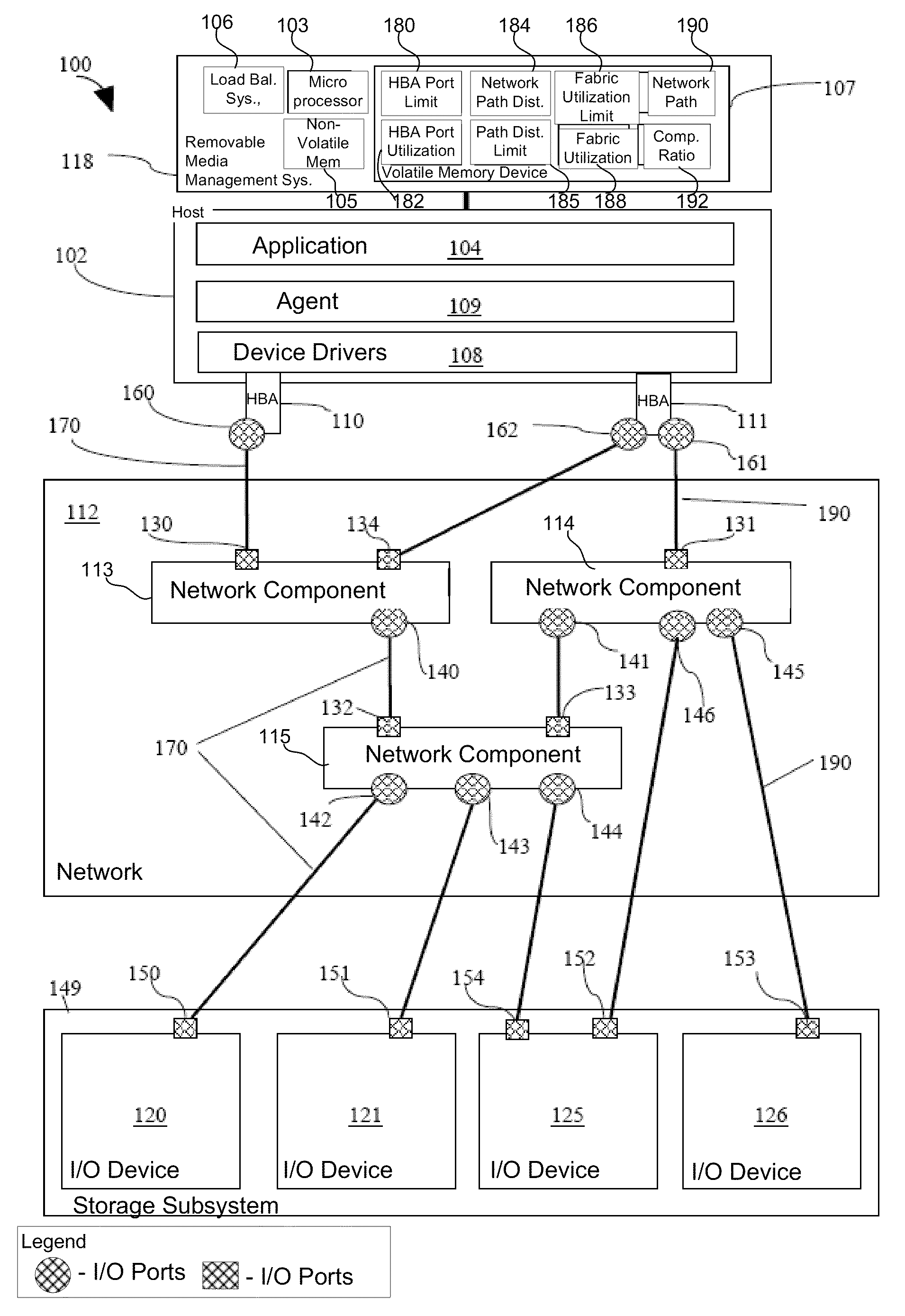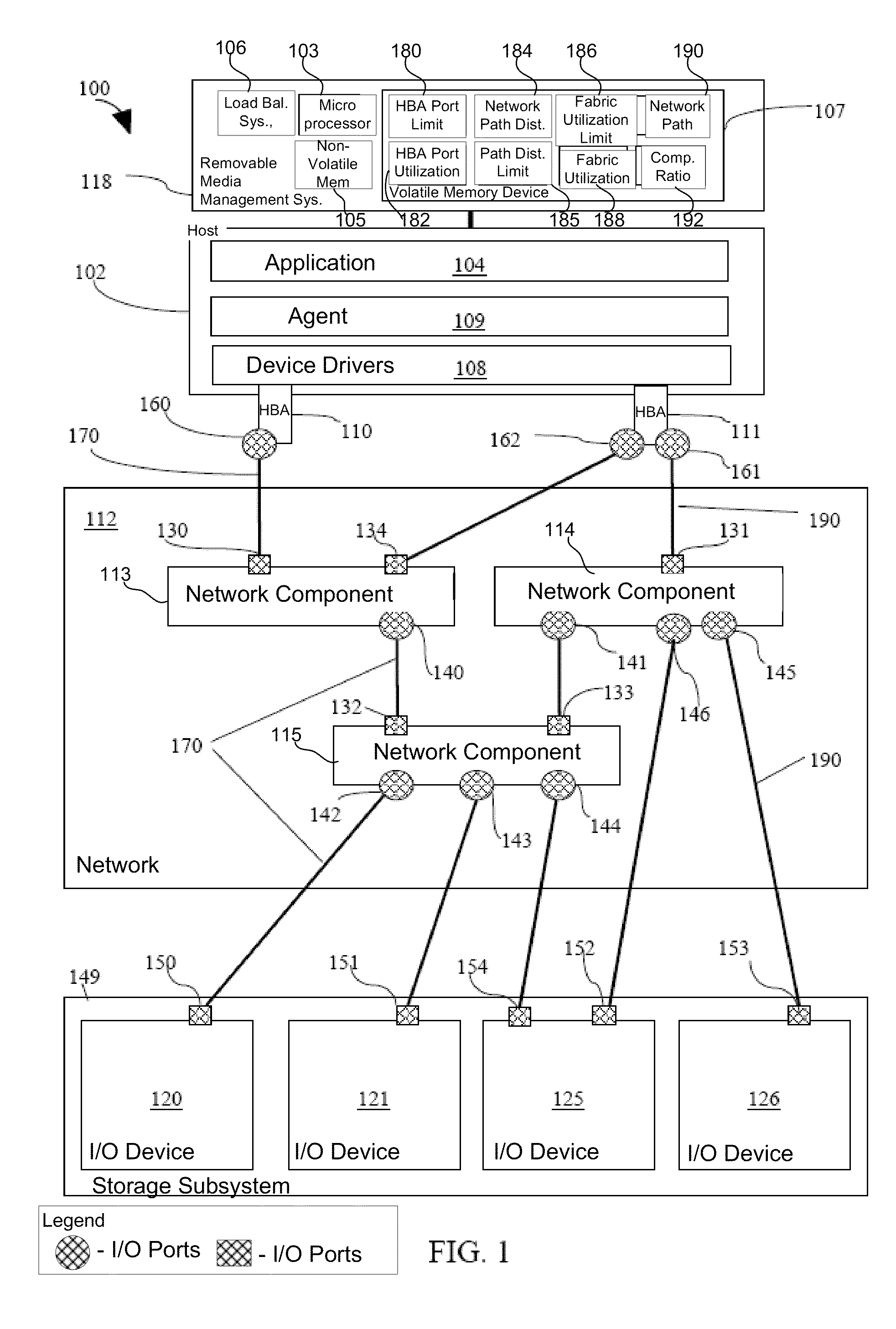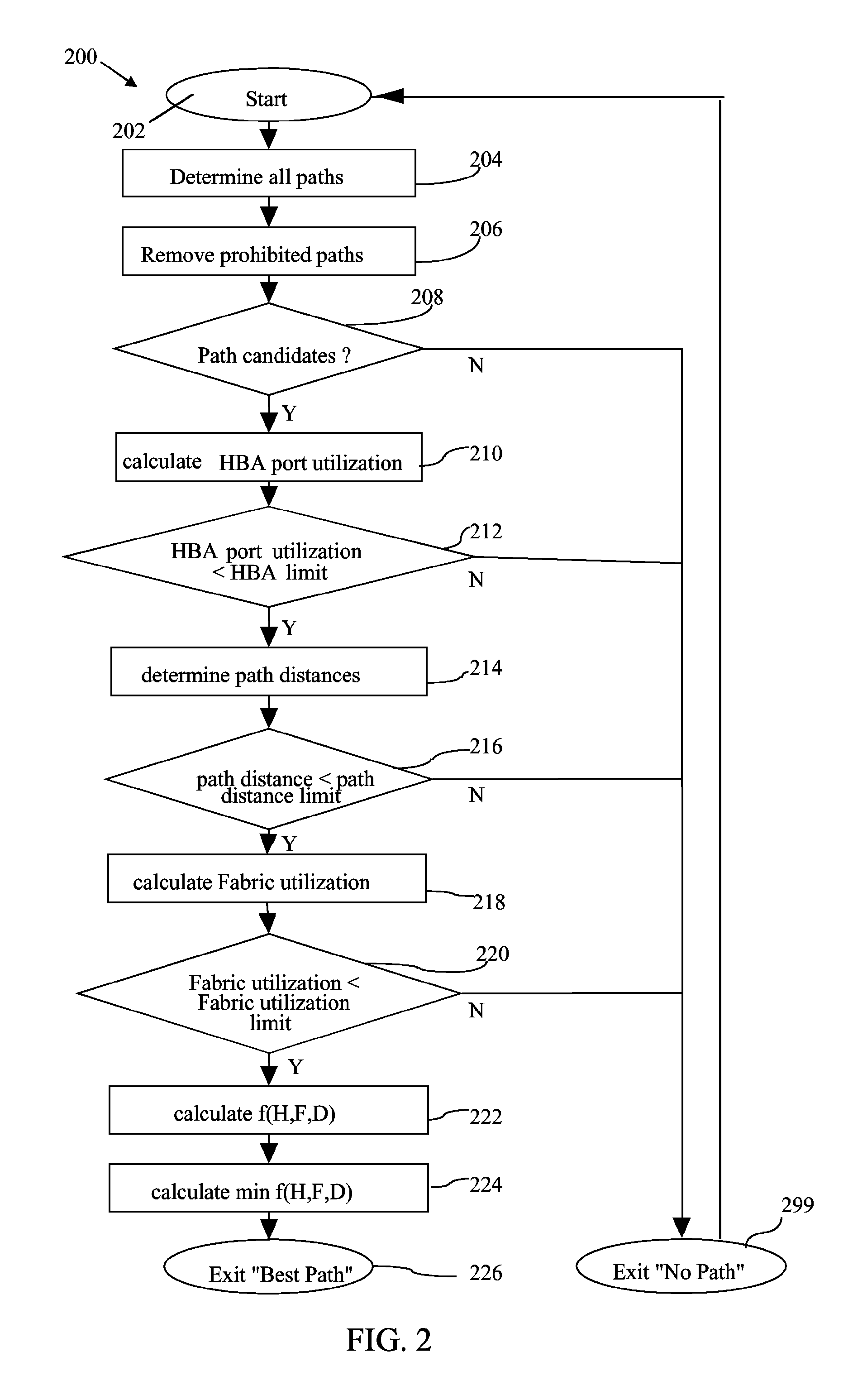Load distribution in storage area networks
a storage area network and load distribution technology, applied in the field of storage area networks, can solve the problems of limited sharing by bandwidth considerations, performance suffers, and the i/o port cannot utilize a certain number of drives efficiently, and achieve the effect of never exceeding the maximum bandwidth of the i/o device infrastructur
- Summary
- Abstract
- Description
- Claims
- Application Information
AI Technical Summary
Benefits of technology
Problems solved by technology
Method used
Image
Examples
Embodiment Construction
[0035]FIG. 1 is a block diagram of a system that implements one embodiment of the present invention. The system comprises a removable media management system 118, a host system 102, a network 112, a storage subsystem 149. The removable media management system 118 is a computer system which comprises a load balancing system 106, a microprocessor 103, a non-volatile memory device 105, and a volatile memory device 107. The host system is also a computer system, e.g. a server system, which comprises an application 104, an agent 109 to communicate with the removable media management system 118, device drivers 108, and host bus adapters (HBA) 110, 111 that comprise I / O ports 160, 161 and 162 respectively.
[0036]The network 112 comprises network components 113, 114, and 115 which are typical network devices such as for example switches, routers, and hubs within a storage network (for example, Fibre Channel, iSCSI). Each network device comprises I / O ports 130, 131, 132, 133, 134, 140, 141, 1...
PUM
 Login to View More
Login to View More Abstract
Description
Claims
Application Information
 Login to View More
Login to View More - R&D
- Intellectual Property
- Life Sciences
- Materials
- Tech Scout
- Unparalleled Data Quality
- Higher Quality Content
- 60% Fewer Hallucinations
Browse by: Latest US Patents, China's latest patents, Technical Efficacy Thesaurus, Application Domain, Technology Topic, Popular Technical Reports.
© 2025 PatSnap. All rights reserved.Legal|Privacy policy|Modern Slavery Act Transparency Statement|Sitemap|About US| Contact US: help@patsnap.com



